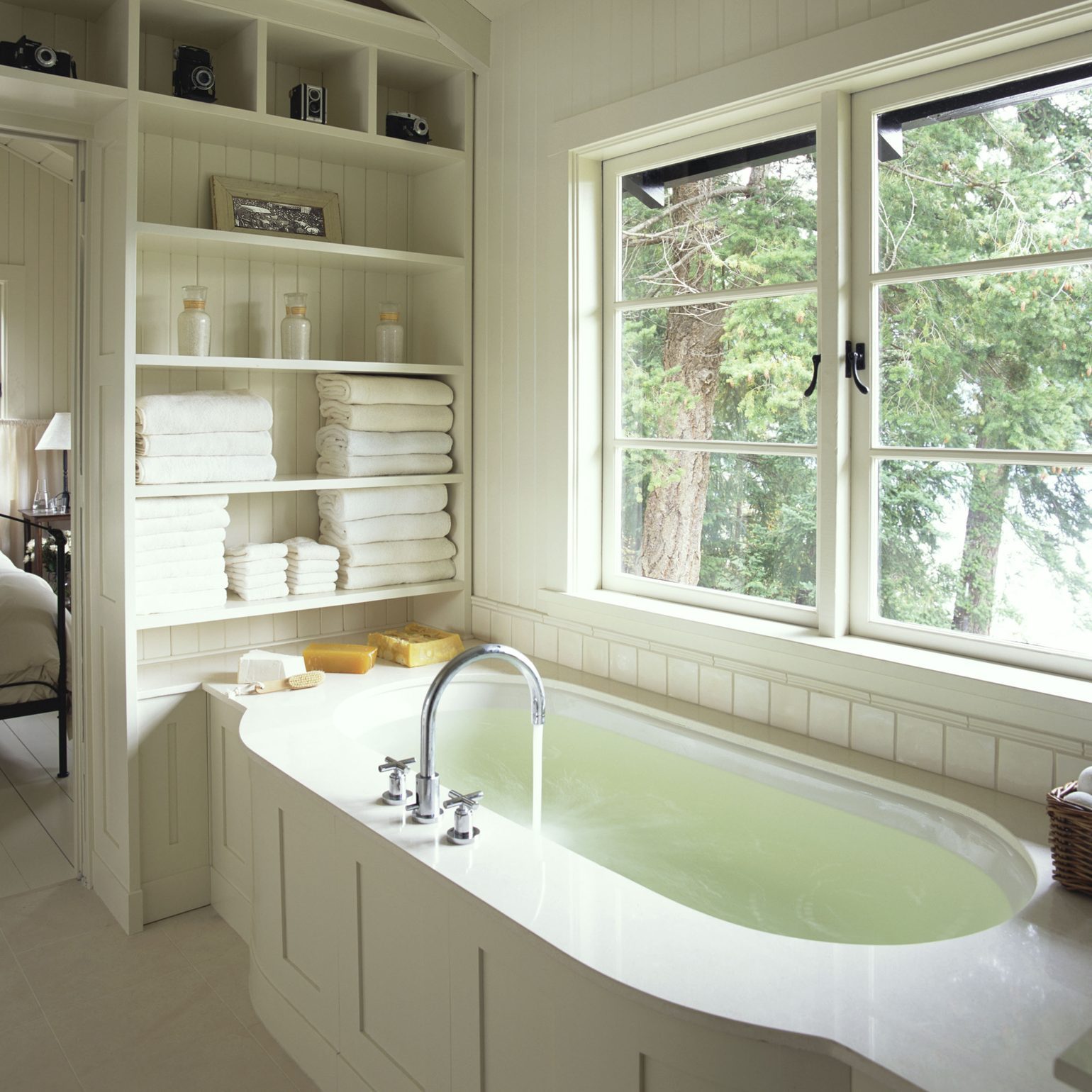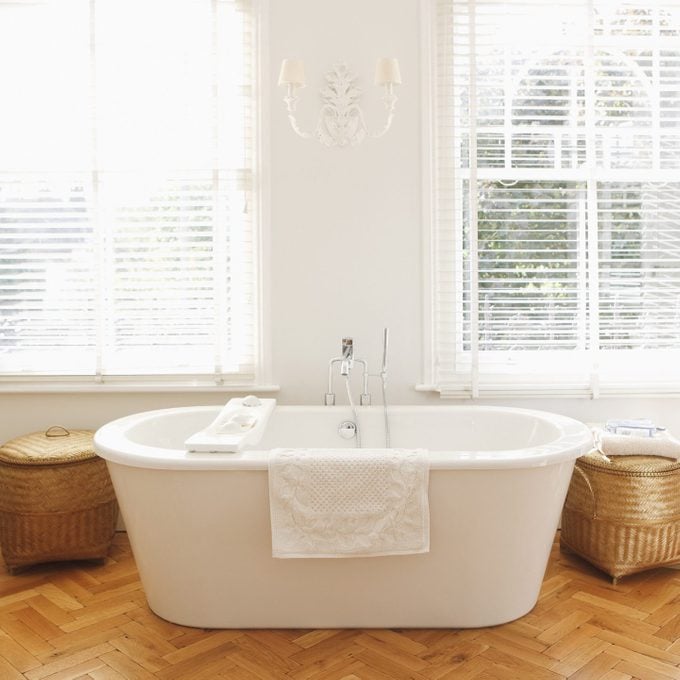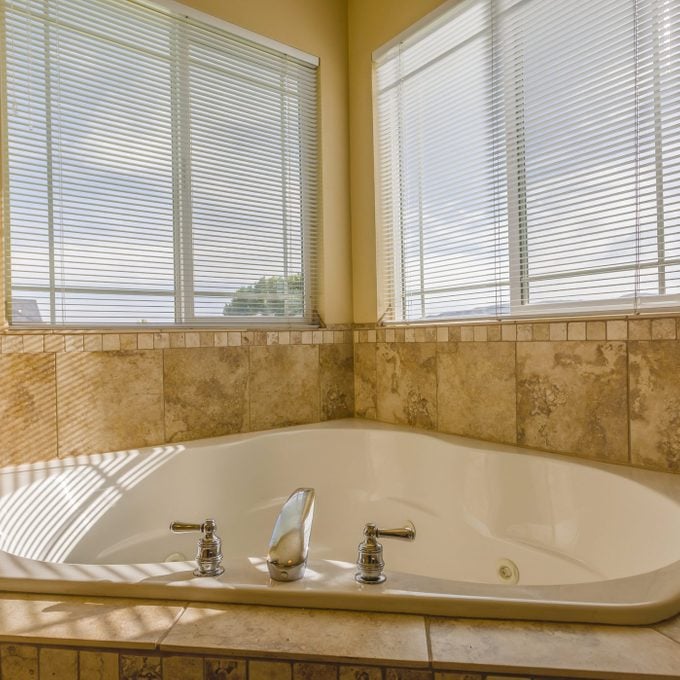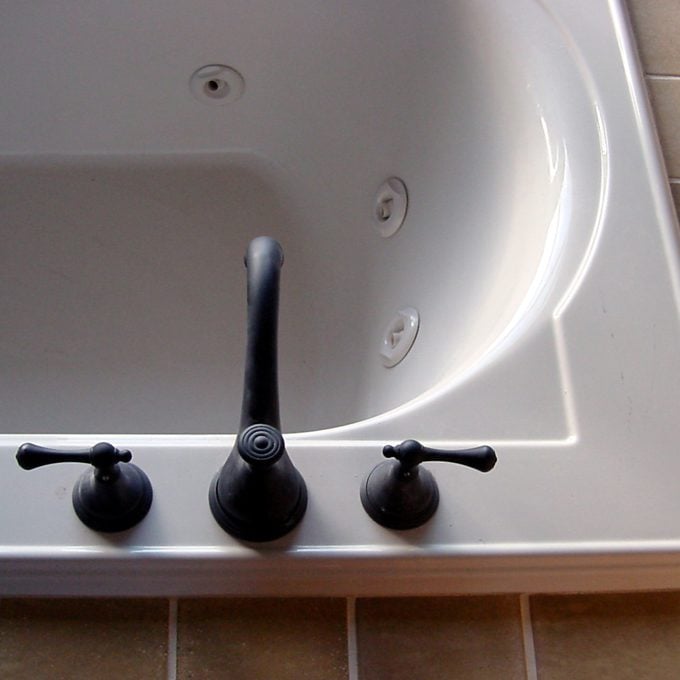Is your bathroom ready for an upgrade? Here's everything you need to know about selecting and buying a bathtub.

What To Know About Bathtubs

Upgrading a bathtub can dramatically change the overall look of a bathroom. Simply having more space around a tub, a deeper soaking basin or a visually appealing style can transform your bath from a utilitarian space into a luxurious, at-home oasis.
We’ll take a quick overview of the types of baths available, talk about standard vs. custom options and discuss some tips for choosing DIY or professional installation.
On This Page
What Are the Basic Types of Bathtubs
Bathtubs are usually described by their physical style and intended purpose.
Alcove bathtub
An alcove tub is flanked on three sides by walls. This allows manufacturers to use spirited tubs, skirted tubs, sometimes called apron tubs, would have a decorative front, and three sides that are open to the wall cavity. Less finished material means that apron tubs tend to be more affordable than other types. Although an alcove tub may be purely a tub, the popular shower and tub combination also falls into this category.
Freestanding bathtub

Freestanding tubs are not connected to a wall on any side. There are several variations of the freestanding tub. Claw foot tubs stand on four stylized feet, while pedestal tubs have a single base that extends to the floor. A slipper tub has a top rim that swoops up at one or both ends, making it easier to recline while enjoying a bath.
Walk-in bathtub
A walk-in tub is designed with a door that swings open while the basin is empty. This allows for easy access, making them a favorite for accessibility-minded homeowners. Note that the tub must be filled and drained while the door is closed, so the user will need to plan on a slightly longer bathing time.
Drop-in bathtub
While a walk-in tub refers to the way a user enters the tub, a drop-in tub refers to the way the tub is installed. A drop-in tub installs much like a drop-in sink, with a rim slightly wider then the hole in the supporting structure. These tubs work well as the centerpiece of a bathroom, and for “island” tubs that are surrounded by a tiled base. With less finished surfaces than other styles, you might think a drop-in tub would be affordable. However, their larger size and the additional labor and materials that go into their supporting enclosure tend to land them on the higher end of the price spectrum.
Undermount bathtub
An undermount tub is similar to a drop-in tub, but it is mounted to the underside of the supporting enclosure, rather than laid on top. Once again, this distinction is very similar to the drop-in versus undermount sink.
Corner bathtub

A corner tub is designed to tuck into the corner of a bathroom. While it always has a corner, corner tubs come in a range of layouts. Some are square, with two finished sides, while others have a triangular shape with a single finished side. A corner tub can be designed to go into an alcove or function as a drop in or undermount. It’s common to see corner tubs that also have a whirlpool function.
In addition to the physical styles, there are two types of tubs that stand out because of their features. These can be any of the styles mentioned above, but are normally called out separately due to their popularity.
Soaking bathtub
Soaking tubs are designed to hold more water, allowing for long, luxurious baths that give the sensation of floating in a pool. These oversized tubs are far more likely to be freestanding or drop-in/undermount. They may also feature flourishes such as flat bottoms or slipper designs.
Whirlpool/spa bathtub
Whirlpool tubs pump pressurized water through jets, creating a relaxing massage and swirling the water. The water may also pass through a heater, keeping the water warm and comfortable, perfect for a long soak. (“Jacuzzi” is actually a specific brand of bathtub.)
Here is your guide to DIY Whirlpool Tub Installation!
What Are Common Bathtub Materials?

Acrylic and Fiberglass
Lightweight and repairable, tubs made of acrylic or fiberglass are the most popular models made today. They are also the most affordable, in terms of purchase and installation.
Enameled Cast Iron
The combination of durable porcelain enamel and rigid cast iron makes for extremely long-lived tubs. When you see an antique claw foot tub that requires a team of four to move it, that’s a cast-iron tub. While it’s still possible to buy newly made cast iron tubs, the higher material and installation cost has made them much less common.
Enameled Steel
Lighter than cast iron, a bit noisier and slightly less durable, enameled steel is also less expensive.
Stone Resin
These bathtubs are made of a resin blended with natural stone powder. The result is a durable material that can be poured into almost any shape imaginable. In terms of construction and ease of cleaning, they are very similar to stone resin countertops, and tend to have a higher price tag than the other options on this list.
What Are the Standard Bathtub Sizes?
There is no single standard size for bathtubs, but there are a few ranges that you’ll see, depending on the type of tub you’re considering. (Note the distinction between height (the measurement from the floor to the top of the tub) and depth (the measurement from the inside bottom of the tub to the bottom of the overflow drain).
Alcove Bathtubs
The closest to a standard size is found in alcove tubs, where most models are 60 inches long and either 32 or 30 inches wide. However, there are longer models available, up to 70 inches, that better fit tall bathers. Most alcove tubs are about 15 inches high.
Walk-in Bathtubs
Designed for accessibility, these tubs tend to be shorter and higher. Expect to see walk-in units up to 36 inches high, with a variety of lengths available.
Soaker Bathtubs
A tub designed for soaking requires a much deeper basin. Look for depths of 20 to 30 inches. This larger size is why most soaker tubs are either freestanding or drop-in.
Tight Spaces
If you have a particularly tight space, consider a mobile-home-sized tub, which is 54 inches long and 27 inches wide.
Freestanding and Drop-in/Undermount Tubs
With no restrictions placed on them by walls, freestanding tubs are available in almost any size and shape. Drop-in and undermount tubs often have a supporting enclosure built to hold them, so they are also available in many shapes.
Where To Buy Bathtubs?
There are essentially four options when it’s time to buy a bathtub.
Big Box Stores
Big box stores have a wide selection, good prices and are generally easy to get to. It’s hard to beat their pricing for common options like alcove tubs.
Specialty Plumbing Outlets
Specialty plumbing stores will often have display rooms, the best bathtub selection and experienced salespeople who can help you find exactly the right tub for your home. (They’re also a good resource if you decide to hire a pro for installation.)
Online Retailers
Online stores have a wide selection, but there’s little assistance in making your decision. You’ll have to educate yourself about what sort of tub you need, and if you take delivery only to find that it’s not the best fit, you’ll have to deal with the return.
Salvage Stores
Architectural salvage stores are a fantastic resource for vintage tubs, especially claw foot tubs. The downside is that you never know what will be in stock, and you may be hunting for some time before finding exactly what you’re looking for. Also, not every town has a second-hand store like this.
How Much Does a Bathtub Cost?
Prices are determined by size, style, special features and material. There are tubs from a few hundred dollars to 10s of thousands. But the vast majority of them are on the more expensive side of the scale.
- A completely bare-bones acrylic tub, apron-style, with shallow depth is available for $250 to $400 at big box stores.
- Drop-in and undermount tubs start around $500 to $700 and range upward from there.
- Corner tubs, with their added size and design complexity, frequently cost in the $900 to $1,200 range.
- Freestanding tubs vary a great deal, starting around $600 to $1,000, and ranging up to $3,000 or more.
- Whirlpool functionality adds about $500 to any tub; closer to $700 for heated jets.
- Soaker-depth tubs also add around $300 to $600.
How To Install a Bathtub
Replacing an existing tub is absolutely a DIYable job, especially for intermediate to advanced DIYers who have one or more friends to help out. (It’s theoretically possible to install a tub by yourself, but given their size, having a second pair of hands will make the installation go much easier.)
Remember that bathtub installations usually need more than one skill set. Even freestanding bathtubs need supply and drain plumbing, but shower/bath combos will also need drywall and/or a surround. Whirlpool tub installations will need some electrical skills, and drop-in or undermount tubs may require some adjustments to the framing or finish of the support platform.
As a result, the tools needed will vary by the type of bathtub you’re installing. However, it’s safe to say that any bathtub you’ll install will need to connect to the existing plumbing supply and drain lines, to set the tub level and avoid water infiltration. For that, you’ll likely need slip-joint pliers (such as Chanellocks), an adjustable wrench, level and silicone caulk. Depending on the material that adjoins the tub, you may also need tools to work with drywall, wood framing, finish trim and tile. While it’s possible to install a bathtub in a few hours, play it safe and plan on a full day for the installation. Proper planning is especially important if you’ll be working on the only bath in your home! If that’s the case, take the time to lay out your tools and materials in advance, so that the installation goes as smoothly as possible.
Bathtub Installation Cost
Replacing a basic existing bathtub will cost around $500 to $700 (labor only). A heated whirlpool tub will raise that cost a few hundred dollars.
Those numbers include removal of an acrylic or enameled steel tub. Cast iron tubs can be more difficult to remove, so cast iron removal will likely cost $150 to $300 extra.



















